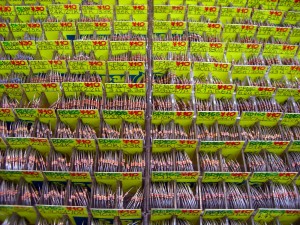Last June I was appointed to the role of Artistic Director of ISEA 2013 in Sydney. Considering that about 5 years ago I told anyone who listened that I would never do another festival again, many have taken it upon themselves to remind me of the flat-out hypocrisy of this. I’d said no to several offers and enquiries to take on other festival type-gigs, but there was something in the opportunity of ISEA – the International Symposium on Electronic Arts – that made it an easy decision and an exciting opportunity.
From the late 90s when Newcastle’s This Is Not Art festival began through to the end of 2006 when I finished up as Director of Melbourne’s Next Wave Festival, I was never not working on a festival. There is a particular insanity to devoting a year or two of your life to an event that comes and goes in a little over a week. There is a unique emptiness when you wake up when it’s all over – partly exhausted, partly elated and often asking “was that it?” But for there is also something enthralling and terrifying that draws you back.

Image: Telstar Logistics
Part of the reason I thought I wouldn’t be doing it again was the lack of something that actually fitted. My skills aren’t really suited to the large-scale performing arts or major biennale. When the opportunity to take on ISEA2013 came up, it really caught my attention. ISEA is part conference and symposium and part festival – it is a format that particularly appeals to me. Its success will be measured less in box office numbers and more in the lasting legacies and connections it makes. It comes with a fantastic brief and a great history. It provides an opportunity to position electronic arts and creativity at the centre of Sydney and Australia’s cultural life for a while – a place where I think it increasingly belongs and yet is often under acknowledged. The fact that, in 2013, Sydney will become the first place in the world to host ISEA twice after 21 years is also a nice excuse to get electronic art out of its “perpetual tomorrow” and to acknowledge the contribution that artists have made as experimenters, explorers and questioners in creating the world we have today.
The other reason I jumped at the idea of doing ISEA2013 is that I think I have something to bring to it. Both in Australia and internationally, there is a sense that it may be time to play with the model and reinvent it. While the community that gathers at ISEA is engaging in work and ideas that are fascinating, provocative and at times inspirational, the context often doesn’t do them justice. There are so many adjacent communities of artists, experimenters, imagineers and media makers that are not yet part of ISEA that could be as audiences and participants.
We live in a world where creativity, culture and technology are deeply intermeshed and ISEA should sit near the centre and not at the margins of that. My experiences creating festivals and events that connect to some of these audiences will hopefully lead to better contexts, new audiences, and lasting connections between the core of what ISEA does with the possibilities around it. The fact that ISEA’s theme “resistance is futile” – provides a direct invitation – to acknowledges and embraces the idea that electronic arts are increasingly ubiquitous is a great platform from which to do this. It gives us both an excuse and an obligation to connect out to those forms of contemporary media-based creativity that are all around us.
A challenge, for better or for worse, is that I am not an electronic arts specialist. I don’t pretend to be and yet all my projects there is recurring obsession with the ways in which technology is changing creativity and artistic practice in all its forms. Indeed, making a TV series about that idea first took me to ISEA in Singapore back in 2008. Many of Australia’s ISEA artists have already crossed my path through This Is Not Art, Electrofringe and Next Wave through to my writing and media work.
ISEA 2013 is fortunate to have Ross Harley as chair of the academic advisory committee and Kathy Cleland as chair of the curatorial advisory committee. Both bring a wealth of knowledge and their knowledge, and the teams they are assembling will bring even more. With their help I’m excited about the prospects for curating a compelling platform of ideas, artists and exhibitions and a context that brings a community together more effectively than before and that presents them to a new, excited and engaged audience.
Marcus Westbury






